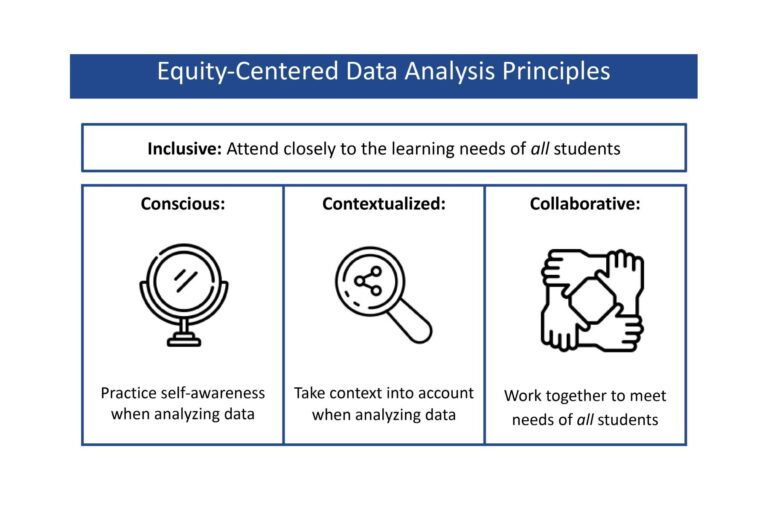San Diego ‚ÄĒ As education continues to be a cornerstone for opportunity and growth, ensuring equitable access and outcomes remains a critical challenge. The San Diego Foundation has released an extensive report examining the latest data on educational equity across the region. This analysis sheds light on persistent disparities affecting students from diverse backgrounds while highlighting areas of progress and potential pathways for systemic change. In this article, we delve into the findings to better understand how San Diego is addressing educational inequities and what steps lie ahead to create a more just and inclusive learning environment.
Disparities in Access to Quality Education in San Diego
Despite San Diego’s reputation as a thriving urban center, significant inequalities persist within its educational landscape. Students in under-resourced neighborhoods often face a lack of experienced teachers, limited extracurricular opportunities, and outdated learning materials. This disparity is starkly visible when comparing graduation rates and standardized test scores across districts, revealing a troubling divide that correlates closely with income, race, and neighborhood infrastructure.
To illustrate the scope of imbalance, consider the following data snapshot summarizing average per-student funding and graduation rates in select San Diego areas:
| District | Average Funding per Student | Graduation Rate |
|---|---|---|
| High-Income Area | $14,200 | 92% |
| Mid-Income Area | $11,500 | 85% |
| Low-Income Area | $8,700 | 74% |
Key factors contributing to these discrepancies include:
- Unequal distribution of district funding and resources.
- Variations in access to advanced placement and enrichment programs.
- Infrastructure challenges, including school facilities and technology access.
Analyzing Achievement Gaps Among Different Student Demographics
Disparities in academic performance among student groups continue to highlight systemic challenges within San Diego’s educational institutions. Data reveals that students from low-income households, English language learners, and certain racial and ethnic minorities consistently score below their peers on standardized assessments. For instance, recent figures show that while 75% of white students meet grade-level proficiency standards, only 48% of Latino students and 42% of African American students achieve the same benchmarks. These gaps suggest that underlying factors such as access to quality resources, language barriers, and socio-economic conditions significantly impact student outcomes.
Efforts to close these gaps must prioritize targeted interventions and equitable resource allocation. Schools with higher concentrations of underserved populations often report less funding for advanced coursework, extracurricular activities, and counseling services‚ÄĒall critical components for academic success. Key areas to address include:
- Increased bilingual and multicultural support programs
- Expanded tutoring and mentoring initiatives
- Investment in technology and learning materials
- Community partnerships fostering parental engagement
| Student Demographic | Proficiency Rate (%) | Access to Advanced Coursework (%) |
|---|---|---|
| White | 75 | 68 |
| Latino | 48 | 34 |
| African American | 42 | 29 |
| English Language Learners | 40 | 25 |
Community-Led Initiatives Driving Change in Educational Equity
Across San Diego, grassroots organizations are pioneering innovative strategies to dismantle barriers in education, aligning resources directly with community needs. These initiatives prioritize localized solutions such as mentorship programs, culturally responsive curricula, and accessible tutoring services to close achievement gaps. By empowering families and fostering community partnerships, these efforts demonstrate measurable improvements in student engagement and academic success.
Key elements driving impact include:
- Collaborative decision-making that centers underserved voices
- Utilization of real-time educational data to target resources effectively
- Investment in professional development tailored to equity challenges
- Strong coalition-building between schools, nonprofits, and civic leaders
| Initiative | Focus Area | Reported Outcome |
|---|---|---|
| Mentor Connect | Youth Support | 20% rise in graduation rates |
| Cultural Roots Curriculum | Inclusive Education | Increased student participation by 30% |
| Neighborhood Learning Hubs | After-School Tutoring | Improved literacy scores by 15% |
Policy Recommendations for Closing the Opportunity Divide
Addressing the pervasive opportunity divide in education requires a multifaceted approach that combines equitable funding, community engagement, and data-driven interventions. Policymakers must prioritize funding formulas that direct more resources to historically underserved schools, ensuring all students have access to high-quality teachers, modern facilities, and advanced learning tools. Additionally, expanding early childhood education programs can lay a stronger foundation for lifelong learning, particularly in low-income neighborhoods where children are often denied these critical opportunities.
Effective strategies should also emphasize community partnerships and culturally responsive curricula to foster inclusive environments. Investments in academic support programs such as tutoring, mentoring, and mental health services are essential to mitigating barriers beyond the classroom. Below is a snapshot of recommended policy actions prioritized for immediate implementation:
| Policy Focus | Recommended Action |
|---|---|
| Funding Equity | Revise funding formulas to increase allocations for underserved districts |
| Early Childhood | Expand universally accessible pre-K programs |
| Community Engagement | Prioritize partnerships with families and local organizations |
| Support Services | Enhance access to tutoring, counseling, and mental health resources |
Closing Remarks
As San Diego continues to grapple with educational disparities, the data presented by the San Diego Foundation offers a critical lens through which policymakers, educators, and community leaders can assess progress and identify areas needing urgent attention. While challenges remain, the Foundation’s comprehensive analysis underscores the importance of targeted investments and collaborative efforts to ensure that every student, regardless of background, has access to quality education. Moving forward, sustained commitment and transparent tracking of these key metrics will be essential to closing equity gaps and fostering an inclusive educational environment for all San Diegans.







